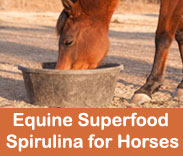|
C-phycocyanin extracted from laboratory grown Spirulina platensis was screened for antifungal and antiviral activity. The identity was confirmed by HPTLC and molecular weight determination in comparison with standard C phycocyanin P2172 (Sigma Aldrich) The crude extract as well as partially purified and purified phycocyanin were tested against 5 fungal sps (Candida albicans, Aspergillus niger, Aspergillus flavus, Penicillium species and Rhizopus species) at 3 different concentrations. Purified phycocyanin was more effective in inhibiting the fungi compared to crude phycocyanin. When tested against 4 viruses (New castle virus, Avian adenovirus, Hepatitis- A virus and Polio virus) grown in tissue culture, The partially purified and standard phycocyanin showed good activity till 1:2 dilution.
Spirulina cyanobacteria is an excellent source of phycocyanin. The protein fraction may contain up to 20% phycocyanin. It is used as a nutrient, ingredient and natural pigment for food and cosmetics, as a potential therapeutic agent for diseases induced by oxidative stress and as a fluorescent marker in biomedical research. Various researchers have developed several methods for purifying phycocyanin. The purpose of this study was to extract and purify C-phycocyanin from spirulina, and to screen the antifungal and antiviral properties of the phycocyanin obtained from cyanobacteria.
Extraction: Several different methods can be used to extract the chromoprotein of interest (eg phycocyanin in spirulina) and subsequent purification. On the laboratory scale, there are two main methods: one method is through the enzymatic hydrolysis of the cell wall, and then the crude extract is purified through a series of procedures, including centrifugation, fractional precipitation, dialysis and column chromatography. Doke proposed a second effective method for extracting phycocyanin from S. platensis. He used three different methods, namely water extraction (4°C for 24 hours), homogenization, freezing and thawing in phosphate buffer pH 7.0. Prabuthas et al. extracted C-phycocyanin with distilled water and 1% CaCl2 solution, and destroyed the cells using an ultrasonic disruptor. In this study, a combination of physical and chemical treatment was used, that is, homogenization in phosphate buffer at pH 6.8, followed by three freezing and thawing cycles to destroy the cell wall. Further centrifugation separates phycocyanin from cell debris. The yield obtained by this method is greater than 4%.
Purification: The purification method of C-phycocyanin involves multiple steps, in which precipitation, purification, and dialysis are used for initial purification, while ion exchange chromatography and gel filtration chromatography are used for final purification. The purity of C-phycocyanin is usually evaluated based on the absorbance ratio of A620/A280. The purity of C-phycocyanin 0.7 is considered food grade, 3.9 is reactive grade, and greater than 4.0 is analytical grade. This study followed the Craig and Carr protocol to partially purify C-phycoerythrin. It was further purified by micro flash column chromatography. With the purification, the concentration of C-phycocyanin increased, that is, the purity of crude phycocyanin of 0.8 mg/ml was 1.17, and the purity increased to 1.85 mg/ml was 3.74. Therefore, it can be inferred from this study that the concentration and purity of C-phycocyanin after purification have also increased to a considerable level.
Antifungal activity: Ramadan et al. found that the total lipid compounds of Spirulina sps are more active against fungi and yeasts. The maximum inhibition zone obtained at 100 μl/well is the inhibition zone for A. niger (28.6±1.53 mm). Rania et al. obtained four solvent extracts from three cyanobacteria including spirulina and two green microalgae. They evaluated the antifungal activity (8sps) by agar pore diffusion method (100µl/well). They found that Spirulina and Oryzae have the highest antifungal activity. Follow the agar block method in the study. Crude phycocyanin at a concentration of 1:1 & 1:2 cannot inhibit the growth of the test fungus. Even at low concentrations, partially purified and purified phycocyanin inhibited the growth of all five fungal species tested. It can be inferred from the results that the activity of phycocyanin after purification is improved, and the minimum inhibitory concentration of C-phycocyanin for the test organism is 45 μg/ml.
Antiviral activity: The water-soluble extract of spirulina showed a dose-dependent inhibition of herpes simplex virus type 1 (HSV-1) in Hela cells, with a concentration range of 0.08-50 mg/ml. If the extract is added to the cells 3 hours before infection, the extract will affect the penetration of the virus at a rate of 1 mg/ml. The water-soluble and lipid extracts of S. platensis showed antiviral activity against HSV-1 in vero cell lines. S.platensis filtrate exerts antiviral activity by interfering with virus adsorption in Vero cells. When treated with algae filtrate at a concentration of 390.6 μg/ml, the inhibition rate of HSV-1 was 61%, and the inhibition rate of HSV-2 was 81.7%. In the study, it was found that the 1:2 dilution (225µg/ml) can effectively control the test virus. C-phycocyanin shows good activity at lower concentrations.
|


